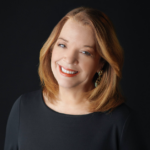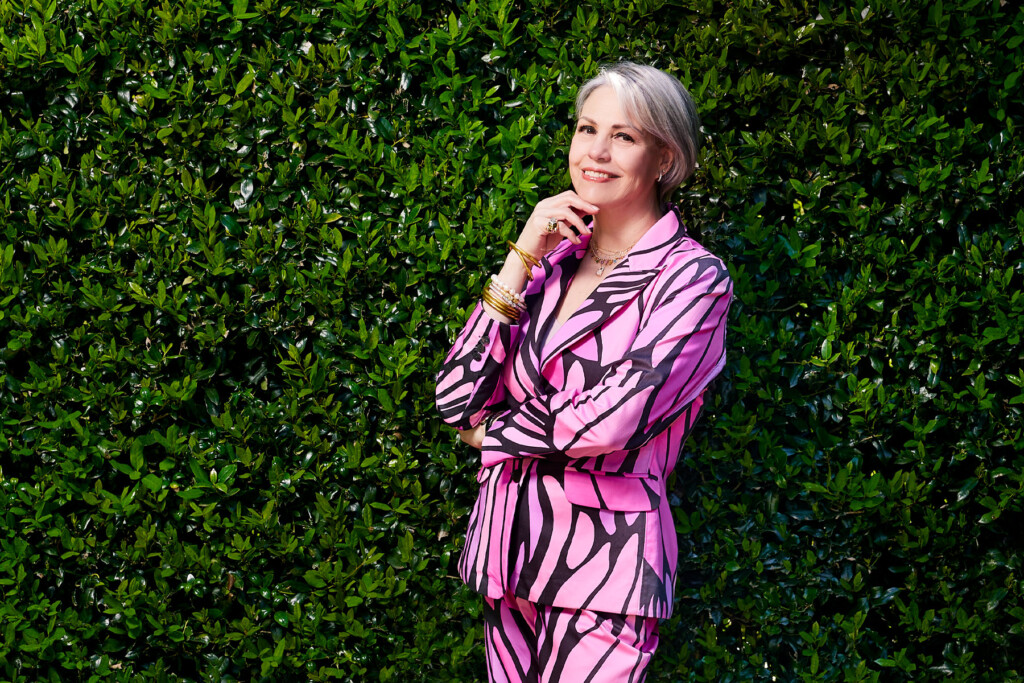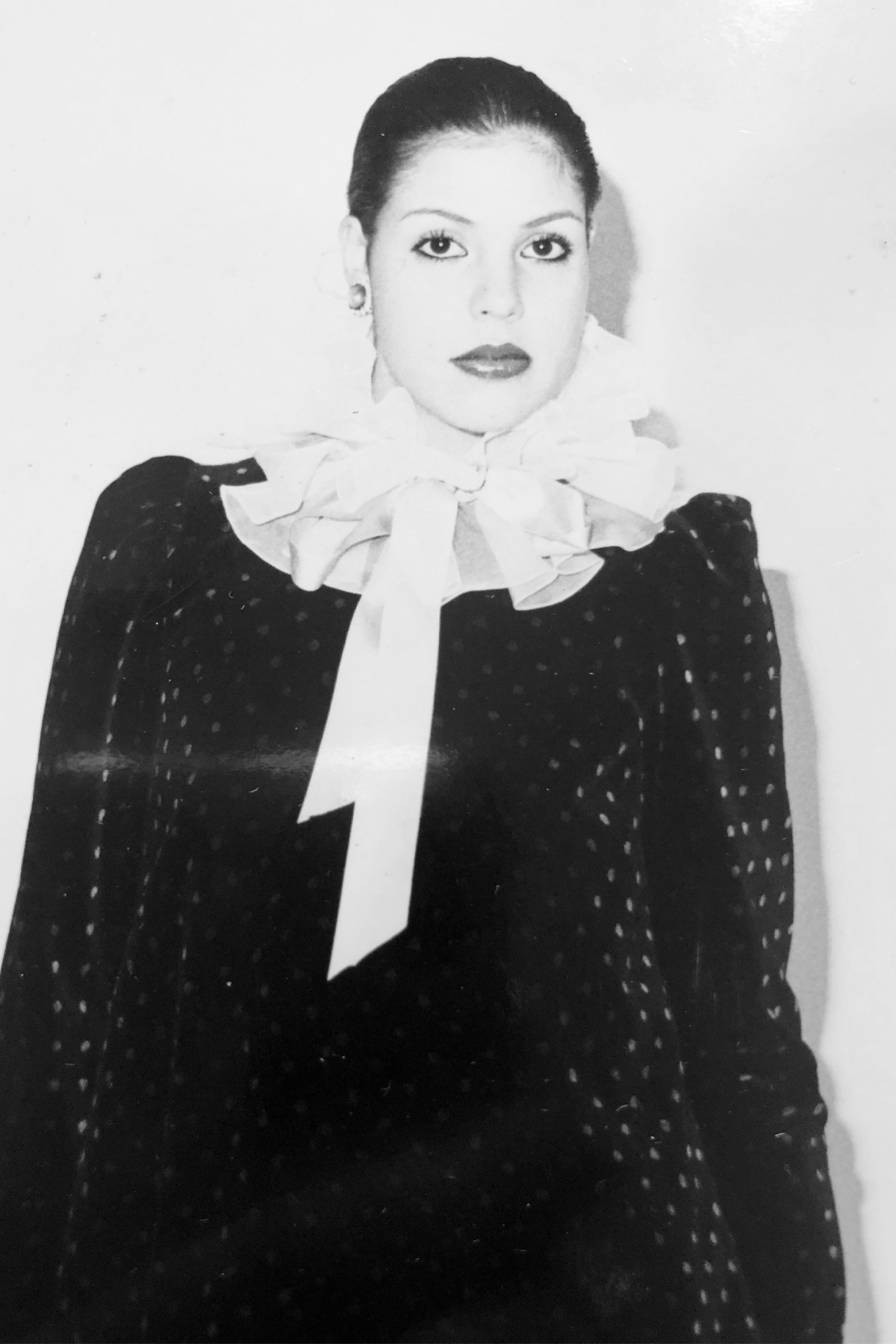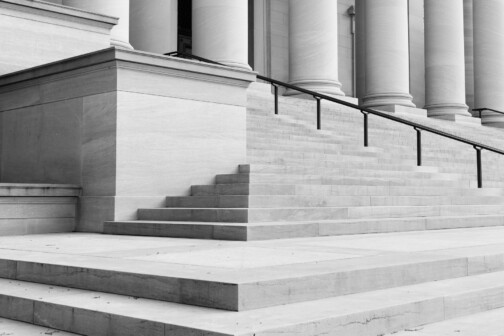It took Jessica Jesse several decades to realize how much she loves the fashion business. She got into the industry as a young teen, working as a model in New York for Adolfo and Calvin Klein, then on the runways of Europe with Hubert de Givenchy. She later ascended to leadership posts on the operations side with luxury brands and retailers. But it wasn’t until she found a way to blend fashion with science and contemplative practice through her Dallas-based jewelry company, BuDhaGirl, that Jesse came to fully appreciate the industry’s power.
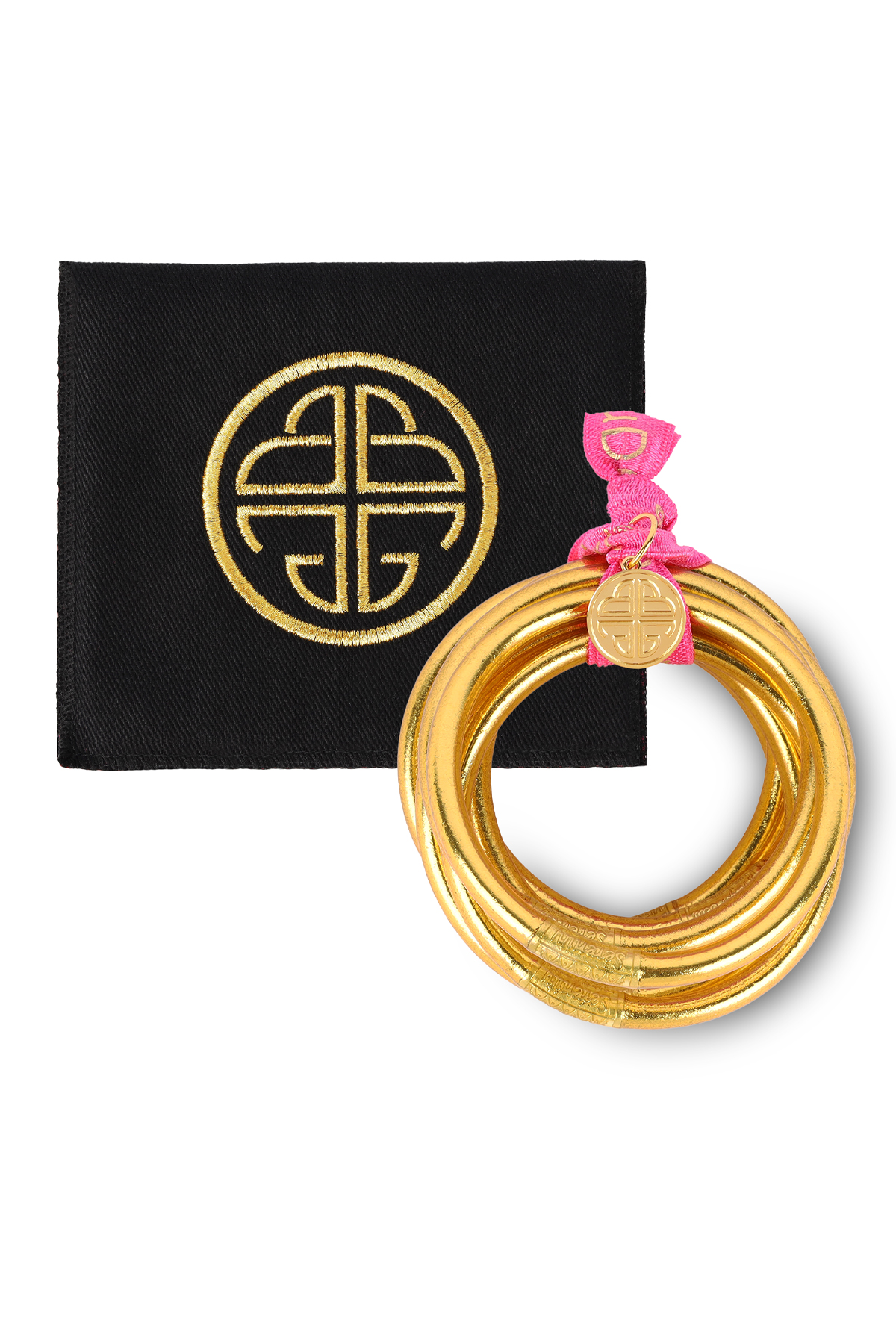
Her signature product is a stack of nine All Weather Bangles. Made of polyvinyl carbonate tubing filled with gold leaf, silver leaf, or other materials, they are waterproof, soundless, nearly weightless, and make it through TSA scanners without a beep. Handmade by artisans in Thailand, the bangles are meant to be put on one at a time while the wearer sets intentions for the day—and taken off one at a time while the wearer expresses gratitude.
To Jesse, the well-being aspect of BuDhaGirl is paramount. She puts as much energy into creating content—meditations, blog posts, social media, and more—as she does into product development. Her jewelry can be purchased via the company’s site or through about 500 retail partners, ranging from upscale local boutiques to Neiman Marcus. Millions of bangles have been sold since BuDhaGirl launched in 2012; the company expects to hit $20 million in revenue this year.
The daughter of a Mexican mother and Austrian father, Jesse grew up mostly in California—in Carmel and Los Angeles. After graduating from high school, she enrolled at SMU. Having already racked up years of experience as a model, she quickly realized that college life was not for her. “I had already been working, and the other kids seemed immature,” she says. Instead, she found what she was looking for in a fashion merchandising program at what is now the Art Institute of Dallas. “This was the early 1980s, and Dallas, at the time, was so ripe for high fashion,” Jesse says. “I discovered that I really liked the business side of the industry—the mechanics behind what everyone else sees.”
While still in her late teens, she took a job with Robert Sakowitz that led to work in Texas and Paris with Versace, Valentino, and Yves Saint Laurent and grew into executive posts with Neiman Marcus and Saks Fifth Avenue. Jesse also helped bring high-end European brands to Highland Park Village, with sister stores on Rodeo Drive, and worked for boutique owner Torie Steele and her then-husband, Sam Wyly (an experience she describes as “difficult and tumultuous”). Then, in January of 1999, she met Bill Jesse, the man who would become her husband and give her the jazzy and memorable “Jessica Jesse” name.
A TURNING POINT
They met on Match.com, back when the Dallas-based online dating site was still in its infancy. “This was before you could upload images,” Jessica says. “There was a premium option for about $30, and I decided to be a big spender. I met Bill two days after being online, so let me tell you, it was the best $30 I ever spent.”
He was living in San Francisco at the time, running an investment and advisory firm and deeply involved with the “Internet 1.0,” as he calls it, funding startups and raising money to launch Wired magazine. “I was on the board of Wired from pretty much its inception to its sale to Condé Nast,” Bill says. “It put us right in the middle of everything. It was an interesting, exciting time.”
He had joined Match.com mostly for business reasons; he wanted to study the company’s platform as part of due diligence for a potential investment in a similar site in Canada. “And then, kismet, right?” Jessica says. “We met, and, yeah, we’ve now been married for 24 years. And yeah, it’s really good.”
The couple made their home in California, and Jessica stopped working, a challenge she says was made easier by the birth of their daughter, Sloane. She also had a 10-year-old son, Charles, from an earlier marriage. The couple had a second home in Cabo and moved there so the kids could more easily learn Spanish. In 2008, when it was time to enroll Sloane in kindergarten, they decided to return to the States—but not to San Francisco. Instead, the family moved to Dallas.
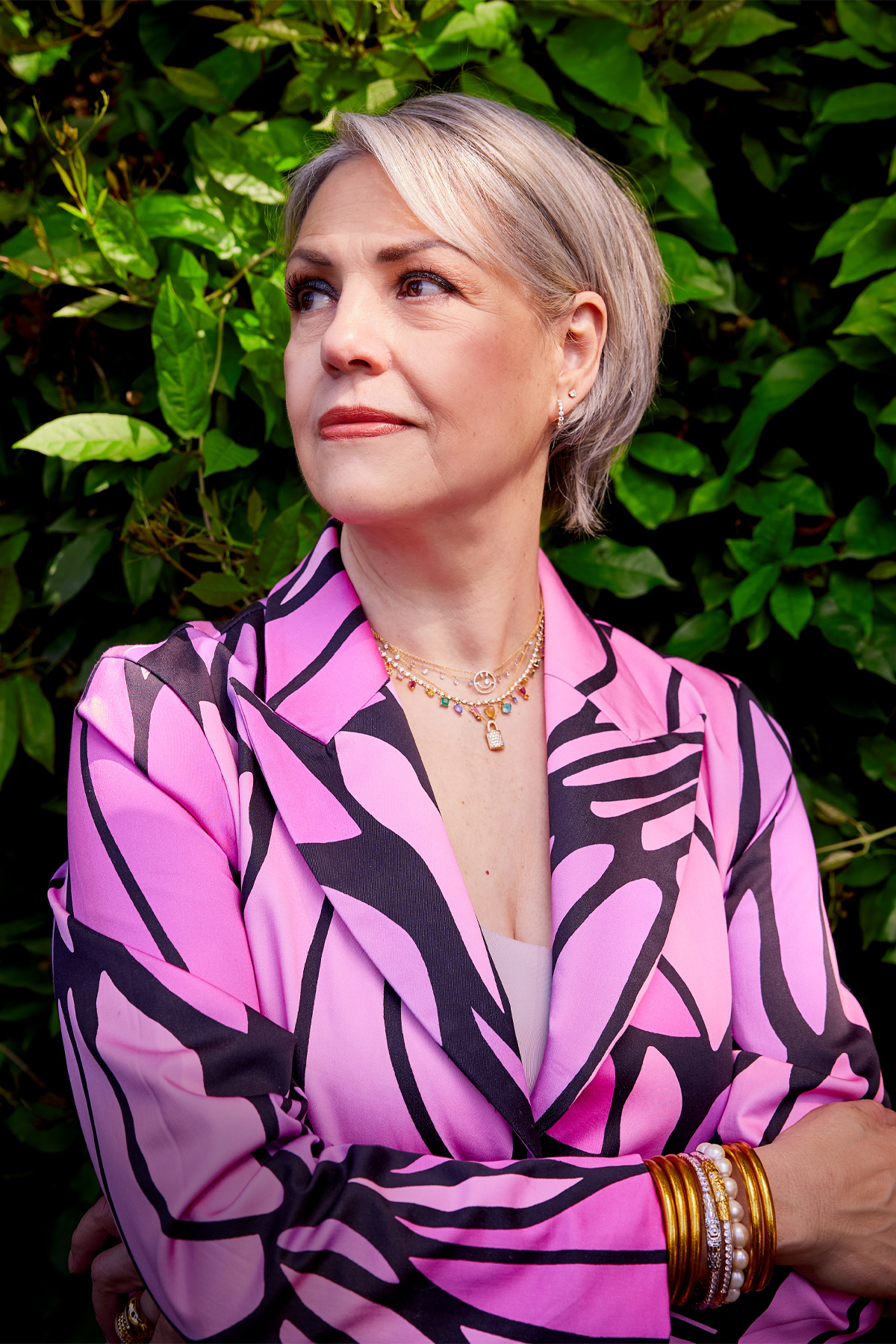
“When we began looking at where to settle, Dallas kept coming up,” Jessica says. “I didn’t want to push too hard and tip the scales, but I love Dallas. You can go anywhere quickly, which is very important for Bill, and the school systems here, certainly in the Park Cities, are great.”
Jessica reconnected with North Texas friends from her past and did charity work. Then in 2010, when her son was a senior at Highland Park High School, he had a psychotic break. “One day, your child is there, and the next day, he’s in a straitjacket,” Jessica says. “No matter where he was being treated, in a clinic or a hospital, people wanted to medicate him, which made it worse. He was totally lost, and it was awful.”
Ever the mama bear, Jessica threw herself into finding a way to help reintegrate her son’s brain. This meant applying focus exercises and shutting off technology. And it meant exploring options in nutrition and “blowing up your gut, because that’s the second brain,” Jessica says. “We tried every form of cabbage known to mankind.” Gradually, all the efforts worked. Charles, who is 30 now, is doing very well.
About a year-and-a-half into things, a friend advised Jessica to go back to work—but this time as an entrepreneur. Mulling over different ideas, she thought about how much she loved the bangles that Buddhist monks give out in Thailand. (She and Bill are avid travelers and have traveled through more than 65 airports together.) Developing and selling her own line of bangles could work, Jessica decided, but only if she could add value by promoting mindfulness. “I wanted to find a way to help people stop for a minute and do a mini-scan of, ‘What am I doing today? Why am I even doing it? How do I feel?’” She came up with the idea of asking bangle buyers to set an intention for each bracelet they add to their wrists.
She went to Thailand and found a production partner who developed a prototype that met her demands for quality. After perfecting the product, she set up meetings with various fashion editors in New York City. “I went to Vogue and Harper’s Bazaar and even The Robb Report, and I started talking about mindfulness in fashion,” Jessica recalls. “I’m not going to tell you I was laughed at, but pretty much, I was laughed at.”
‘VERY SIGNIFICANT’ GROWTH
As an e-commerce company, BuDhaGirl was able to communicate directly with consumers. Still, the early years were tough. Jessica often wondered if anyone was even reading the content she was producing and had to dig deep to keep going. By her fifth year in business, she made the bangles available to wholesalers.
It wasn’t an easy decision. “The margins are cut in half, and no one can tell the story quite like you can,” she says. “Since then, we’ve become much stricter about who we bring in as retail partners. For example, our only national company is Neiman Marcus. We have a very good relationship with them, but even so, there were some stipulations from us. We don’t allow certain things to happen with our products.”
Although it meant giving up some control, going wholesale provided a way for BuDhaGirl to reach a vastly larger base of customers—people who could touch and try on the bangles. Sales doubled for three consecutive years in 2019, 2020, and 2021 and grew by 50 percent last year. “We are at a pace that is very significant for what we do,” Jessica says.
All along, she has had an ace in the hole—her husband, Bill, who serves as the company’s chairman. He also is a managing director of SBJ Capital, a private equity firm based in Walnut Creek, California, that invests in and advises consumer companies. Its portfolio includes a wide range of enterprises, from a large sparkling winemaker to a seller of school uniforms. “The unifying focus is these are all businesses that want to grow,” Bill says. “We help take away the barriers to growth and help provide the foundation they need for growth.”
With decades of experience, he has seen a lot of pitfalls with young businesses, so he knows what to do and what not to do, Jessica says. “But he has never seen a business quite like ours and the way we operate.”
When his wife first shared her plans for BuDhaGirl, Bill thought it was a great idea. “I thought it would be difficult to third-party finance, which turned out to be true,” he says. “And I thought it would probably find its way a little sooner than it did. But I also think the opportunity is significantly larger than what I initially thought it might be.”
One of the biggest challenges the company faces is the proliferation of knockoffs—inferior products that, in some cases, may even be dangerous, Bill says. “We use third-party labs to do regular testing on the products—to make sure that the adhesion is good, that the quality of the tubing we use, and all the ingredients are safe,” he says. “In one sense, being copied says you’ve arrived. But in another sense, it’s a little bit like running around in a dark room with a mallet, trying to hit the cockroaches running across the floor.”
GLOBAL INFLUENCE
As part of her mission, Jessica is heavily involved with the Global Wellness Institute, a nonprofit aiming to empower well-being worldwide by educating people and companies about preventative health and wellness. One of its key programs is The Wellness Moonshot, a platform that has a lofty goal of achieving a world that’s free of preventable diseases. (According to GWI’s, research from the Centers for Disease Control and World Economic Forum shows that roughly 70 percent of deaths each year are the result of preventable causes and that the global cost of treating these diseases is on track to hit $47 trillion by 2030.)
Personal responsibility is key to changing things, Jessica says. “You have to start with you; it’s as simple as that,” she says. “Western thought wants to complicate wellness. People want to go to doctors and be cured. We all go to doctors—I’m not saying you shouldn’t—but what is that cure going to take? And how did you get there?”
GWI is widely known for its annual summit, held in major cities throughout the world. Jessica, who has served on the organization’s board, has been a speaker since 2015, says Nancy Davis, the summit’s chief creative officer and executive director. “What BuDhaGirl does is unique in the market,” she says. “There is no other company I can think of that so authentically and deeply cares about people’s mental well-being and the importance of intention and ritual and then expresses it in such a beautiful and fun and ubiquitous way.
“What people choose to wear and how they adorn themselves speaks volumes about how they feel about themselves, Davis says. “It’s something you know intuitively; Jessica brings it to life and embodies it. She is such a deep-thinking, caring person. She is kind and super smart. I don’t know of another jewelry company that has a scientific board. Jessica is as much a thought leader as she is a businessperson; she has really changed the way people think about things.”
The entrepreneur’s impact is about to get even bigger as her company continues to experience brisk geographic and volumetric growth. It just launched the BuDhaGirl app, which gives users access to meditations, two-minute unplugging ritual exercises, a journal, a BangleStack game, and more. A European expansion is underway, with openings in London in July and Paris in October, and the company’s e-commerce site has been translated in to five languages—French, German, Portuguese, Italian, and Spanish.

From a product line standpoint, BuDhaGirl has added brand-aligned handbags, rings, notecards, journals, and even jewelry boxes to its mix, and its bangles now come in about 40 different colors and styles. One of its newest variations is a stunning three-bangle stack called Three Queens that comes in a modern trio of golds—yellow, white, and rose.
BuDhaGirl puts a lot of effort into studying and engaging with its tribe. It has a robust data science initiative to deeply understand the idiosyncrasies of customers across varying demographics and geographies. A signature marketing outreach involves alerts about the company’s “Stack of the Week,” inspired by exotic locations, books, and celebrities ranging from Audrey Hepburn and Marilyn Monroe to Lenny Kravitz and Cher. The company recently created an exclusive design for the Cattle Baron’s Ball in honor of the charity’s 50th anniversary and hit it out of the park with a 2023 Super Bowl promotion. “We took the team’s colors—red and gold for the Kansas City Chiefs and silver and green for the Philadelphia Eagles—and we offered those four colors during the halftime show at 50 percent off,” Jessica says. “During Rhianna’s performance and all the other hoopla, we ended up with $238,000 in sales—in 29 minutes. Last year, with the same promotion, we sold about $100,000.”
Although the bangles are made in Thailand, they’re packaged and distributed locally from BuDhaGirl’s home base in the Dallas Design District. All marketing is also done out of the facility, which includes a photo studio. The company moved in about 18 months ago and is already outgrowing the space. Jessica has hired an engineering firm to study the possibility of vertical expansion.
Amidst the rapid growth, she is committed to staying true to the company’s mission of well-being. Inner peace can be achieved, no matter the circumstance, Jessica says. “We must live in the present moment and take joy from it,” she says. “I’m an optimist—I always like to think of the future, but I’m very mindful of living as I’m sitting here right now.”
The Artistry Behind the All Weather Bangles
Every BuDhaGirl bracelet is handcrafted and touched by more than 20 artisans who make the bangles in Thailand.
The product that started it all at BuDhaGirl—and remains at the company’s core—is the All Weather Bangle. Packaged in a beautiful, custom silk pouch, the bracelets are made of flexible, polyvinyl carbonate and hand-filled with gold leaf, silver leaf, or other materials by about 240 women in rural Thailand. (Another 70 people work at the company’s fine jewelry building in Bangkok.) “Even before BuDhaGirl, this community understood how to do the process—they just didn’t have enough business to do it,” says Jessica Jesse. “So, most of the women were either rice farmers or buffalo herders. And now, they get to be home with their children, filling tubes.” Jessica herself designed the bead that adorns the bangles’ seal. “It’s called the serenity prayer bead,” she explains. “It’s this little zigzag with a dot in the middle. The zigzag represents your life; your life is never a direct road—it’s always back and forth. And within that back-and-forth is a little dot, which is your focus.”
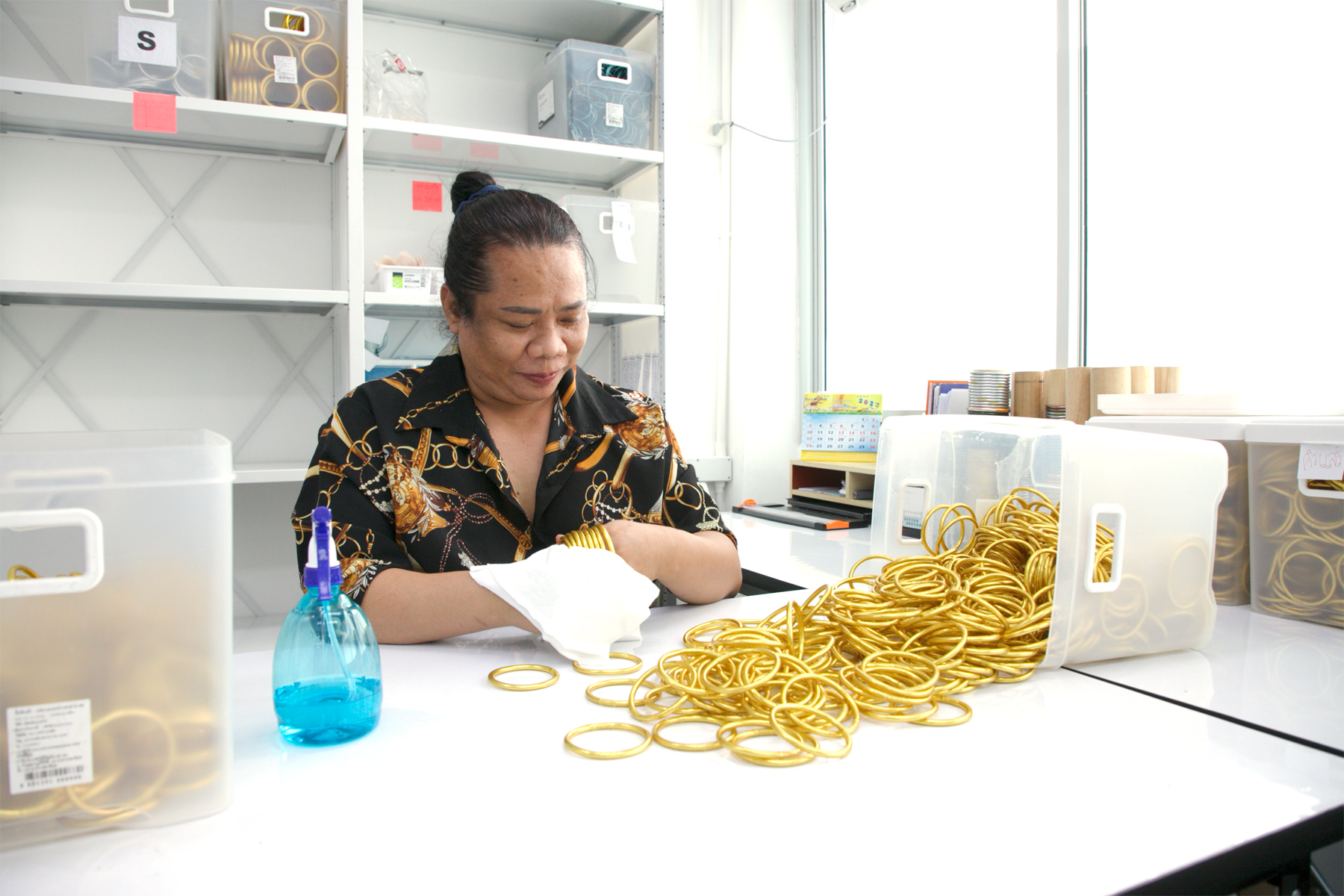
Author
